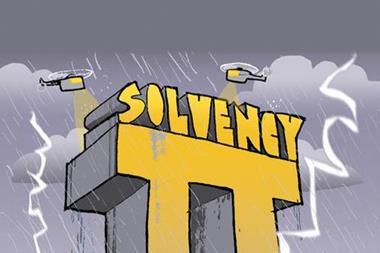Lloyd’s managing agents overwhelmingly back maintaining the existing Solvency II timetable, according to a new survey.
Lloyd’s finance director Luke Savage told a briefing this morning that 90% of agents surveyed agreed that the market should press ahead with the current timetable, under which the directive is due to be implemented on New Year’s Day 2013, and ignore the transitional measures being mooted
Within the last fortnight, the Council of Ministers and European Commission internal markets commissioner Michel Barnier have both outlined packages under which the full implementation of Solvency II would be delayed with a series of so called ‘transitional measures’.
Savage argued that delaying the introduction of the directive will just result in additional costs and undermine the motivation of those who are carrying out the project.
He said: “If they have 18 months instead of six months, the work will stretch out, you won’t end up with a better solution, but you will spend more money and take more time.”
He said that despite the uncertainty around timing emanating from Europe, Lloyd’s had no intention of slowing down its Solvency II implementation programme. The corporation is seeking approval of its own internal model for calculating capital requirements instead of using the standard Solvency II model.
If QIS5 were applied in its current state, Savage estimated that Lloyd’s would need to raise an extra £25bn under the standard model. But even if Lloyd’s wins the concessions it hopes to secure from the European Commission, it would still need to raise an additional £10bn under the standard model. Therefore, the market would need to generate additional profit of £2.1bn a year to maintain its five-year average pre-tax return on capital of 21%.
Lloyd’s general counsel Sean McGovern said that Poland, which takes over the Presidency of the Council of Ministers this week, was committed to unblocking the delays to the Solvency II process.
Hosted by comedian and actor Tom Allen, 34 Gold, 23 Silver and 22 Bronze awards were handed out across an amazing 34 categories recognising brilliance and innovation right across the breadth of UK general insurance.














































No comments yet